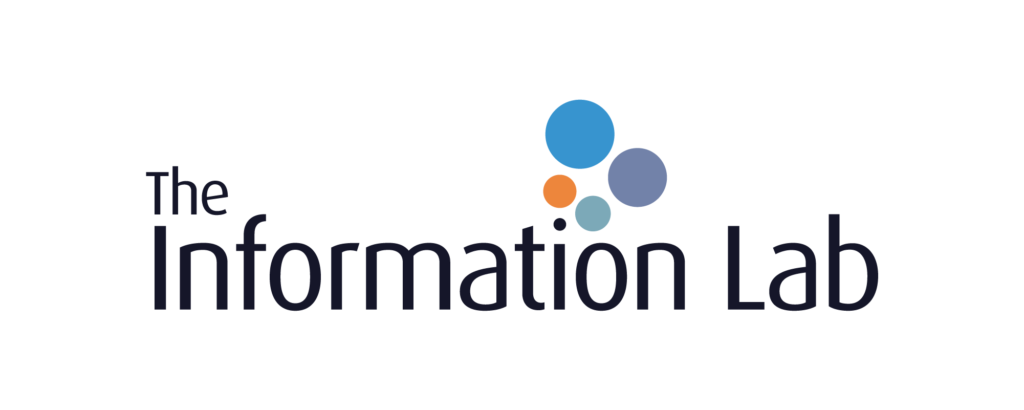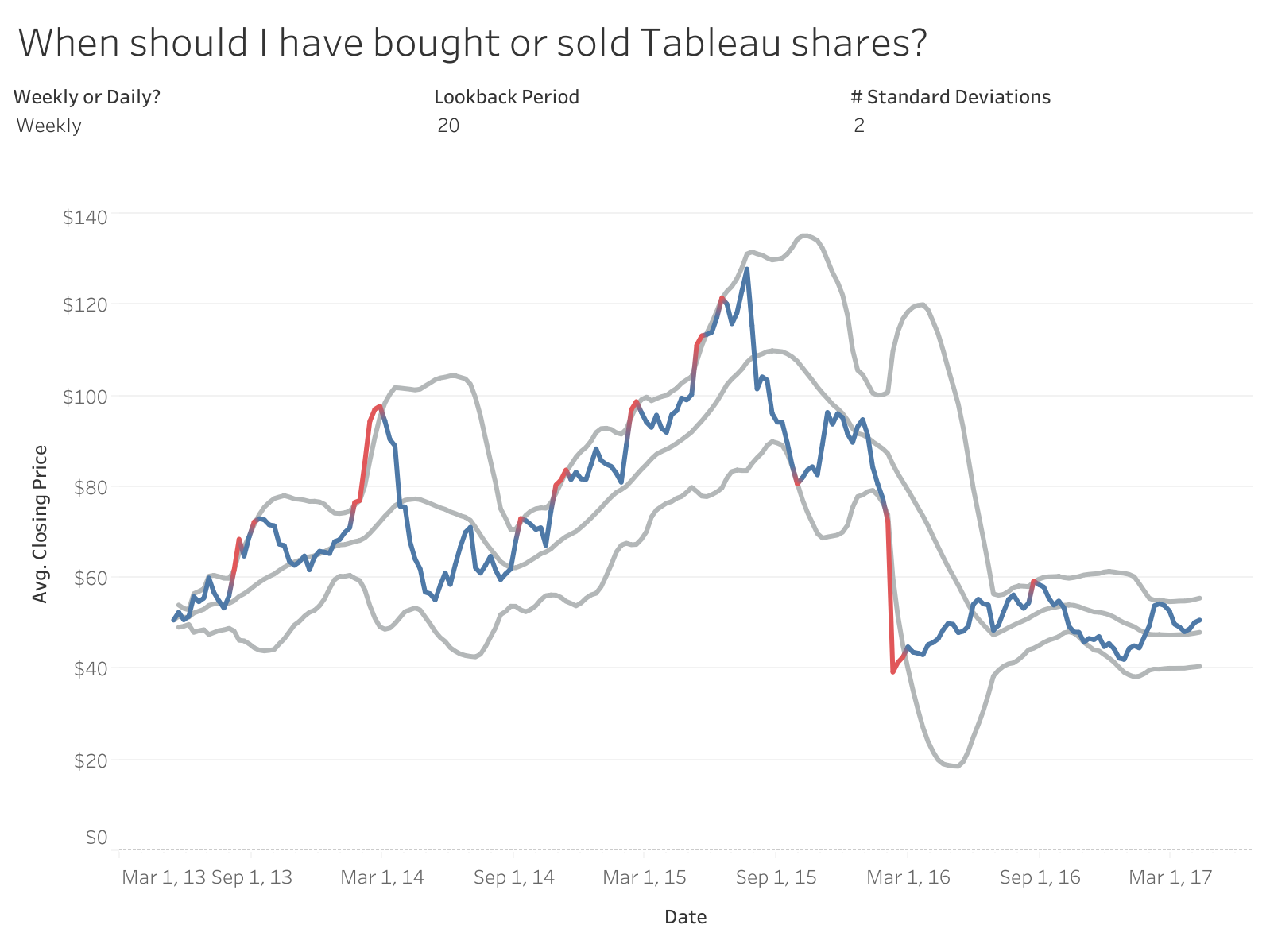Introduction
I hope everyone has had a wonderful, chocolate filled Easter break! Now that the bank holidays are over it’s back down to business. This week I’m challenging you to make some money from the stock market by creating a Bollinger Band chart with Tableau share price data*.
Bollinger Bands are used to measure the price of shares relative to previous trades. The band itself consists of a moving average (MA), an upper band and lower band. The upper band shows the standard deviation above the moving average. The lower band shows the standard deviation below the moving average.
Requirements
- To calculate the upper band you would use (MA + Kσ) where K is the number of standard deviations
- To calculate the lower band you would use (MA – Kσ) again where K is the number of standard deviations
- The moving average, upper band and lower band are all represented as grey lines on the chart
- The average close price (not adjusted) should be coloured red if it is above the upper band or below the lower band. Or blue if it is between those ranges.
- Make sure you match my tooltips. You should BUY when the average close price is less than or equal to the lower bound. You should SELL when the average close price is greater than or equal to the moving average. Otherwise you should do neither.
- The number of standard deviations used in the bands should be changeable by the end user between 1 and 4
- The lookback period should be changeable by the end user between 1 and 50
- The date axis should be switchable between weeks and days
Dataset
if you’re ready to get cracking you can download the data here to start.
Attribute
When you publish your solution on Tableau Public make sure to take the time and include a link to the original inspiration. Also include the hashtag #WOW2023 in your description to make it searchable!

Share
After you finish your workout, share on Twitter and/or LinkedIn using the hashtag #WOW2023 @Tableau and tag @WorkoutWednsday @EmmaWhyte & @vizwizbi



